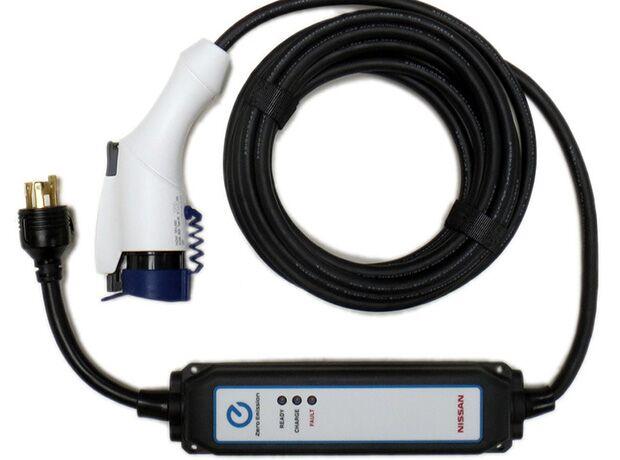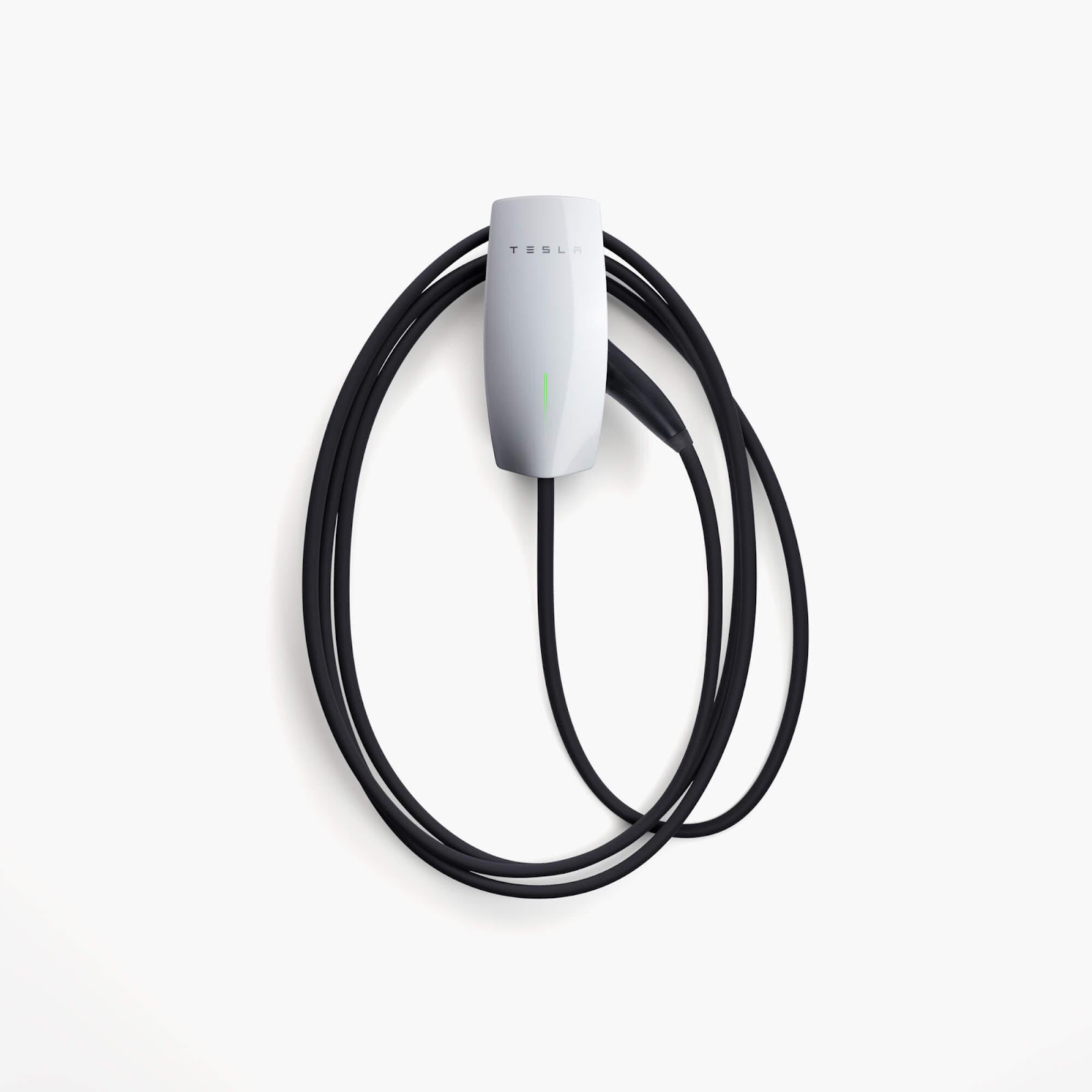Considering the rapid speed at which the Australian EV industry is growing and new EVs are being released to the market, it is important to have the latest and best information on residential EV charging, since this is a much cheaper option than using fast charging stations.

To charge an EV at home you need Level 1 or Level 2 AC chargers that require a 230V single-phase or a 400V three-phase connection. In this article, we will be detailing both home EV charging options, features, characteristics, and more. Aside from that, we will let you know important factors to consider when choosing the best EV charger for your home.
Level 1 EV Charging: Trickle Charging

EVs come with a factory-issued level 1 EV charger that can be used with the preexisting residential wiring. In this section, we will explain this charging level used for residential applications.
Rated Power
Level 1 EV chargers come in different shapes and sizes, but their power rate is limited between 1.8kW and 2.4kW. Since the delivered current for a level 1 EV charger is so limited, it is also called trickle charging.
Estimated Charging Time
The downside for level 1 EV chargers is that charging an EV battery from empty takes a considerably long time. A 2.4kW level 1 EV charger will fully charge the 57.5kWh battery of the Tesla Model 3 in more than 24 hours. This charging time is even longer if the level 1 EV charger features a lower power rate.
Electrical Infrastructure
One advantage of the level 1 EV charger is that it does not require a dedicated electrical infrastructure. The 10.5 amps current demanded by 2.4kW single-phase EV charging stations can be handled by the traditional wiring installed at home, as long as no other high-demand devices are connected to the circuit. This is also known as a plug and play charger.
Level 2 EV Charging: Fast Charging

The fastest AC EV chargers are known as level 2 EV chargers and these do require installing a dedicated electrical infrastructure, but the investment is generally worth it. In this section, we will explain level 2 EV charging, features, and other interesting details.
Rated Power
Rated power for level 2 EV charging varies on its application and type of connection/wiring. Residential level 2 single-phase EV charging stations operating at 230V, feature a rated power that varies between 3.6kW up to 9.6kW. Popular level 2 single-phase EV chargers available in the Australian market include the Ocular LTE and the Zappi EV charger (go here to shop our chargers).
Some modern or electrically robust homes are suited for three-phase circuit connections. Even though most three-phase level 2 EV chargers are used for commercial applications, some homeowners decide to install three-phase level 2 EV chargers to rapidly charge their EVs or charge more than one EV simultaneously.
Estimated Charging Time
The level 2 EV charging time is directly determined by the battery capacity of the EV, the power rate of the charger, and the maximum power rate of the onboard charger of the EV converting DC to AC. For instance, the Tesla Model 3 features a maximum power rate of 11kW AC, but the Nissan Leaf can charge its 40kWh battery at up to 6.6kW AC.
The following table illustrates the estimated charging time for both EVs using different level 2 EV chargers:
Electrical Infrastructure
Residential and commercial level 2 EV chargers require a dedicated single-phase or three-phase electrical circuit to provide the high current demanded by the charger. Single-phase circuits are mainly used for home level 2 EV chargers (most homeowners have single phase power), while three-phase circuits are used mainly for commercial applications.
Even though that is the case, homeowners with a three-phase electrical infrastructure at home should install three-phase level 2 EV chargers that can rapidly charge two EVs in a few hours due to their high power rate. Some remarkable 22kW level 2 three-phase EV chargers are the Wallbox Pulsar Plus and a variation of the Ocular LTE. Generally speaking though, if you don’t have three phase power at home, it can be a costly exercise to upgrade your home (in the $$$$’s!).
Choosing the Best EV Charger for Your Home
It is important to know how to choose the best EV chargers for home. In this section, we explain some factors that will be quite useful when choosing the ideal charger for your home.
Pedestal vs. Wall Mounted
EV chargers can be installed directly in the wall with a wall-mounted system or on a pedestal, resembling a charging station stall. There are no true technical advantages between both options, only aesthetic ones, but wall-mounted EV chargers will save you some floor space. Most people opt for wall mounted EV chargers.
Single-phase Vs. Three-phase connection
The choice between a three-phase charger and a single-phase charger is fairly simple in most cases.
Single-phase EV charging stations are the main option for residential applications because most households have a single-phase electrical connection. If that is your case (which it probably is) then the cheapest choice for you is to install a single-phase charger. Considering upgrading your electrical connection to three-phase is unrealistic in most cases and simply, not worth it.
On the other hand, if you have a three-phase electrical connection at home already existing, you may be able to install a single-phase charger, and so it would be best to install a three-phase EV charger. Not only is the price slightly similar, but a three-phase charger will charge your EV much faster than any single-phase EV charger. However, some utility companies may not even allow you to install a single-phase charger on a three-phase home power supply in order to avoid imbalances in the power grid and in your home power supply.
In other words, if you have a single-phase power supply the best option is to choose a single-phase charger. Meanwhile, if you have a three-phase power supply, the best would be to install a three-phase EV charger.
Tethered Vs. Untethered
Tethered EV chargers include an attached charging cable fixed to the charge case, while for untethered ones the power cable needs to be purchased separately; each of them has its benefits. Some of these are:
Tethered EV charger:
- No additional cable costs.
- The cable is designed to withstand the current of the charger.
- The design of the charger matches the design of the cable.
Untethered EV charger:
- The same cable can be used at public EV charging stations.
- If the cable gets damaged, the charger does not become useless, as you can just change the cable.
- Cables featuring different charging ports may be used to charge different EV models.
There are several benefits to each type of charger, which is why you must choose the one you think will better suit your needs. There are several EV chargers in Australia that feature both designs, the Zappi tethered and the Zappi untethered are options that integrate into your home battery systems, while the Ocular LTE tethered and the Ocular LTE untethered are also excellent options.
Rated power
The rated power for an EV charger limits the maximum delivered current to the EV and eventually the charging speed. Additionally, EV models also feature AC power rate limitations. It is important to match both of these to avoid underusing high-capacity EV chargers. For instance, a 9.6kW charger will deliver its whole capacity to a Tesla Model 3, but only 6.6kW to a Nissan Leaf.
Final Word: EV Chargers at Home, Solutions Suited for All EV Drivers
The Australian EV industry is constantly growing. EV drivers must know there are many available charging options to perfectly suit their needs. Choosing the right EV charging level (usually Level 2) and considering the different factors, will help you determine the best EV charger model to charge your EV overnight and get the best experience out of your EV.